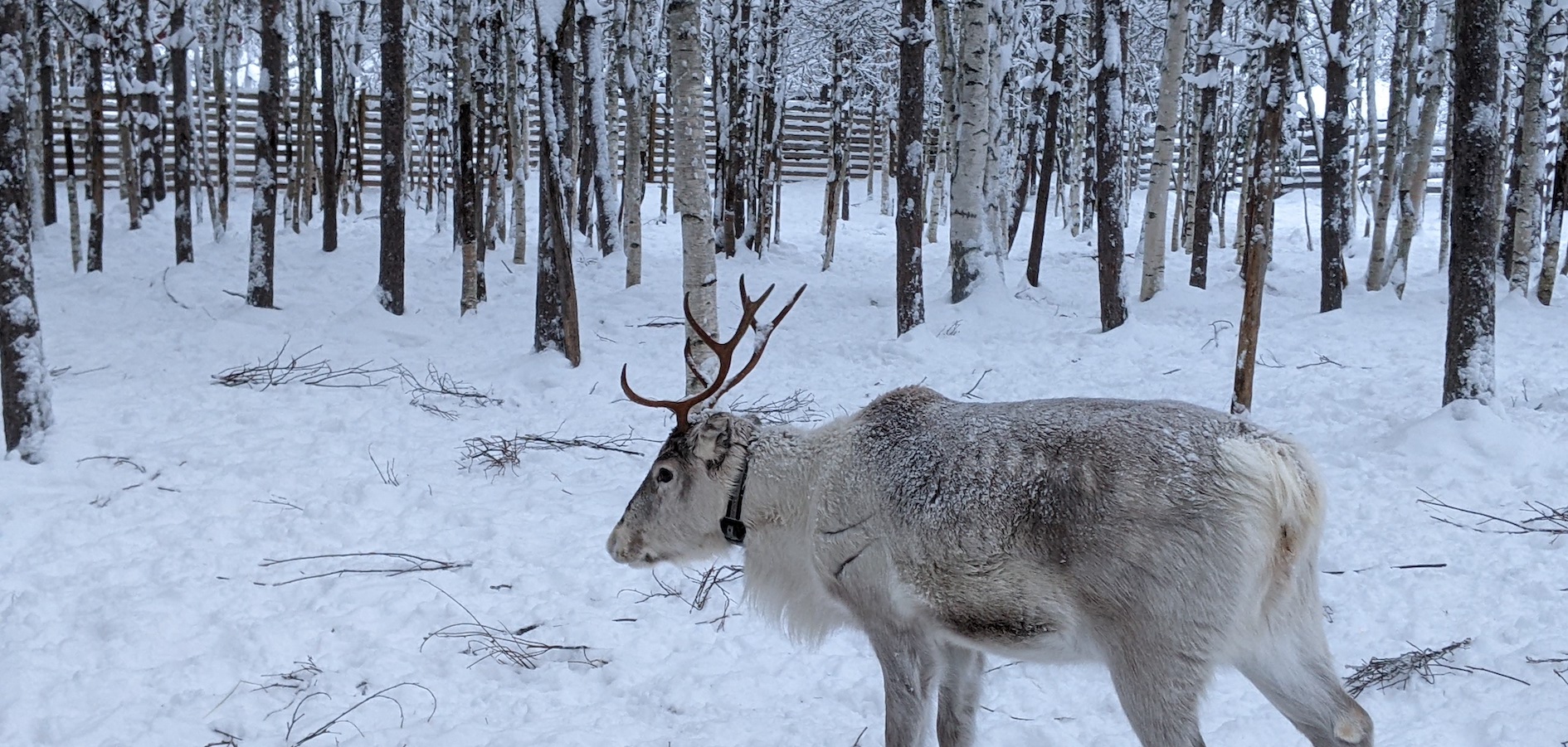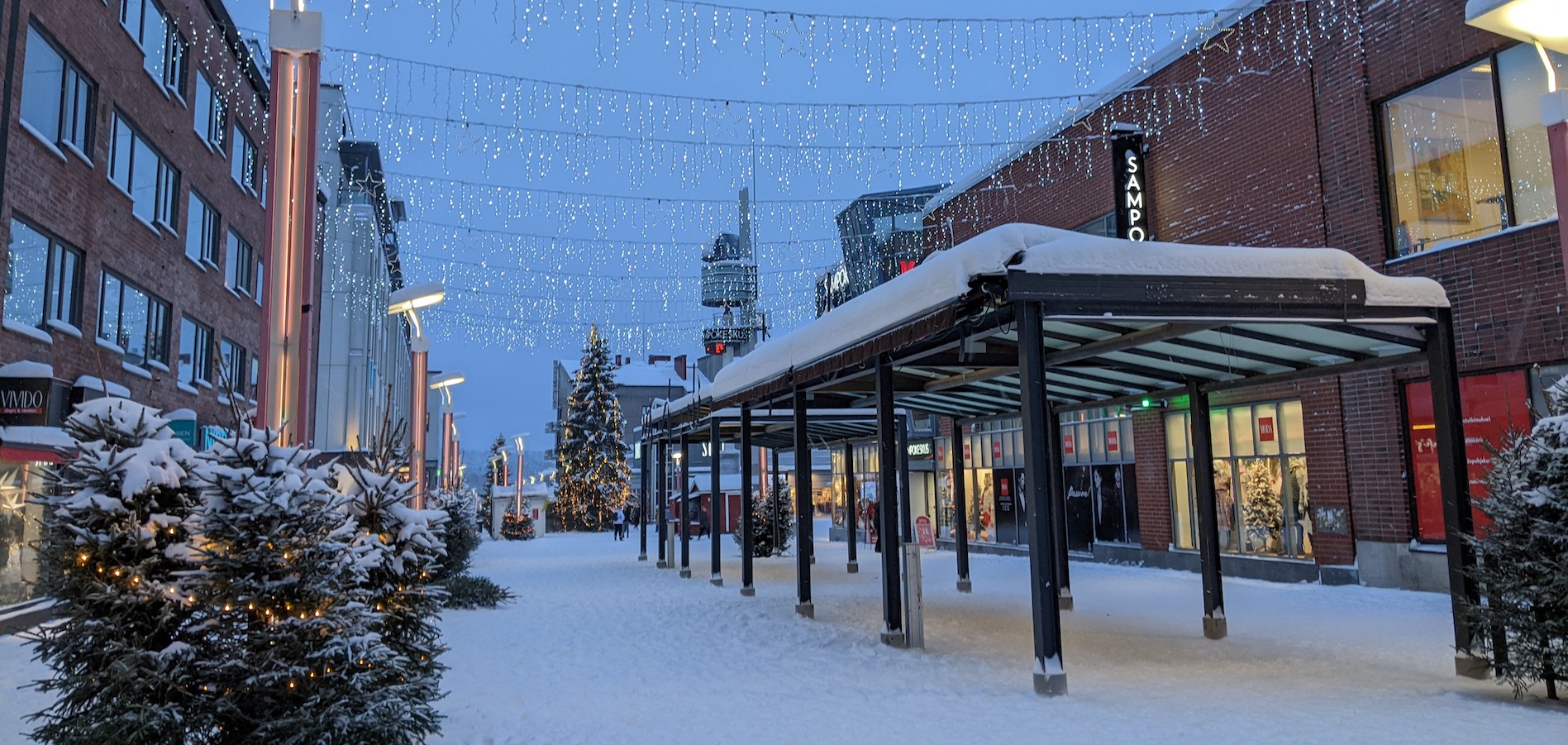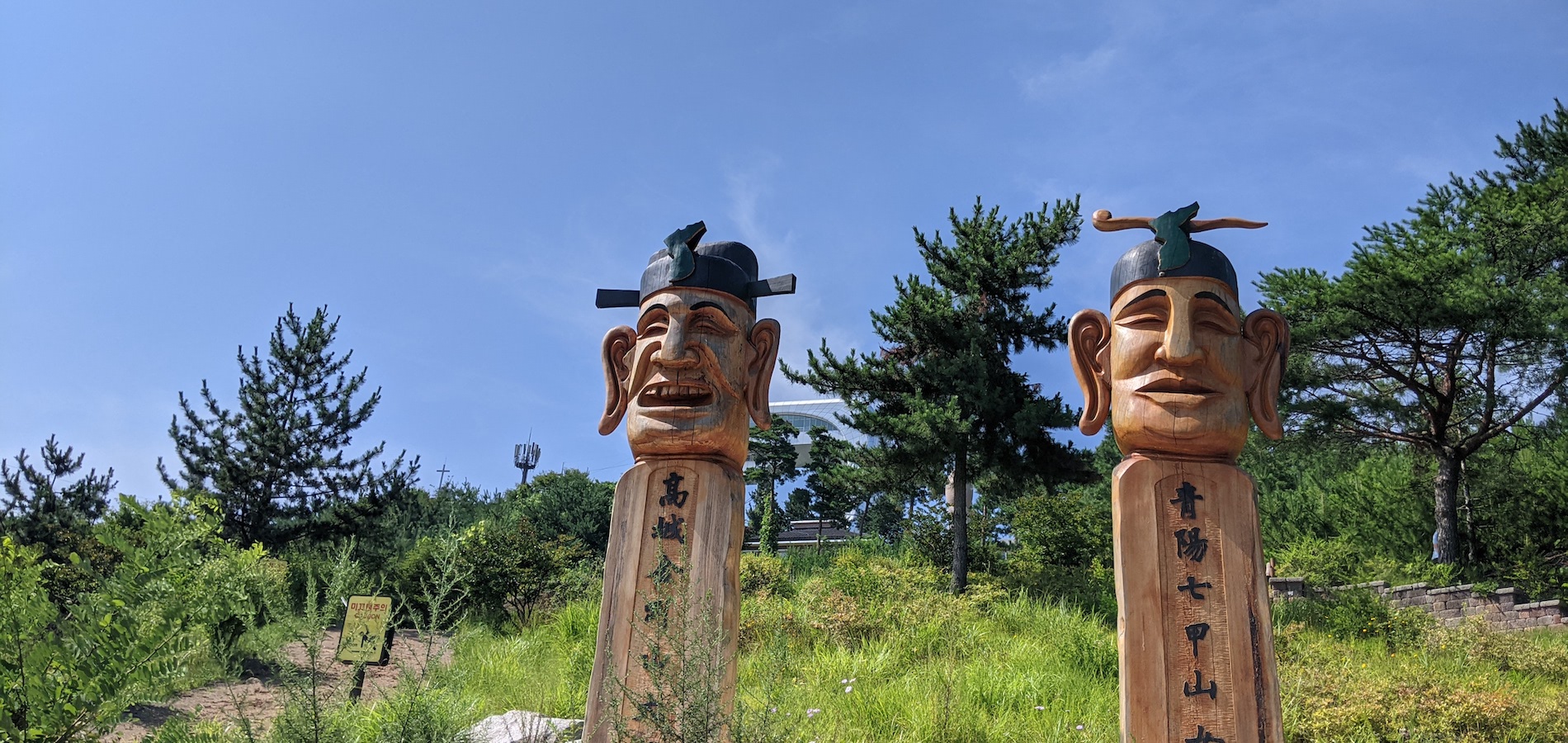Welcome
Thanks for visiting Expat Heather! I’m an international educator, writer, and expat mom currently living in South Korea. On this site you’ll find things about living abroad, teaching in international schools, travel, hiking, and expat life.
The traditional Pakistani outfit is made up of two parts. The shirts, ‘kameez’, are long and loose fitting with two slits on the sides. The slits should be even with the waist or hips, and should not allow any skin to be shown. The pants are called ‘shalwar’ and look like what many of us think of us as ‘genie-pants’ or ‘harem-pants.’ A full outfit is called a ‘shalwar kameez’ and is consider one suit.
For women there is also a large scarf, or ‘dupatta’ that is always worn when wearing Pakistani clothes. It usually serves as a drape to cover the body, particularly the chest, but some women merely wear it as a fashion statement thrown over one shoulder.
Readymade vs. Unstitched Cloth
You can buy readymade clothes in many areas, but not everyone can find the size or style that they like in clothes that are already stitched. Good places to buy ready-made shalwar kameez include Pace shopping malls, Fortress Stadium and Liberty Market. At Pace, you can browse dozens of boutiques, in both men’s and women’s clothing, to get a suit for upwards of 600 rupees ($7.50). In Liberty and Fortress, ready-made clothes are bit pricier. Designer suits for ladies go for 2000 rupees ($25) or more.
The benefit of readymade clothes is that you don’t have to find a tailor and get it stitched. Many readymade outfits have exquisite embroidery or beaded designs that will cost more to get done at a tailor. The downside of readymade clothes is that usually there’s not a dressing room to try on the clothes. When you get home, you may find out that your suit doesn’t fit. Then you’ll have to bring it to a tailor anyway for alterations. More upscale stores have fitting rooms and in-house tailors, but these suits are not in the under 1000 rupees range.
Buying Unstitched Cloth
If you want to buy unstitched cloth, this is easy for both women and men. For men, there are several stores on Model Town Link Road with very affordable cloth. You can also visit a Sunday market, such as the Defence Sunday Market, to get cheaper, yet good quality cloth. For higher quality, and higher prices, you can check out some of the boutiques at Liberty Market. For women, the best place to buy unstitched cloth is Aurega Center in Gulberg, next to Main Market. There are hundreds of other places in Lahore to buy unstitched cloth.
For women, you first need to decide if you want to buy 2-piece or 3-piece suits. 2 piece suits will need a third piece, such as a matching dupatta or matching shalwar, to complete the outfit. 3-piece suits will include pieces for shalwar, kameez, and dupatta. Cloth is usually sold in sets, so you can’t just buy the dupatta and not buy the shalwar and kameez that goes with it.
There are many types of cloth that are appropriate in different seasons. In summer, most people wear lawn, a thin cotton fabric. A 3-piece lawn suit for ladies goes for 250 rupees ($3.10) and up. Men’s cloth is usually more expensive because larger pieces are cut. Nicer lawn suits, that will last for more than one season, will cost at least 400 rupees for a 3-piece ladies suit ($5). Winter clothes are more expensive as the fabrics are thicker. Silks, chiffons, and nice georgette cloth will be more expensive than cheaper synthetic cloth.
Getting the Clothes Made
Before bringing your cloth to the tailor, make sure to shrink it and let it dry. Visit a trim shop to buy any ribbon or beading for your suit. Try to find a tailor who is recommended by a friend and not too far from your home. Tailors are notorious for not having things done on time, and if you have to go to a far away location again and again, you’re more likely to get frustrated.
Get measured by the tailor, but bring a sample for sizing if you have one. Tailors tend to do better when copying rather than drawing the designs themselves. Choose the design you want for the neck and sleeves, and let the tailor know how long your want the kameez to be. A safe bet is to go with knee length or a few inches below. Once you start to learn about the styles, you’ll be able to know which patterns are trendy and keep up with the local fashion.
It usually costs about 200 rupees per suit ($2.50) for stitching in a middle class neighborhood. Depending where you go, the cost may be cheaper or more expensive. Tailors may not sew the loose ends of your dupatta, as there’s special men with sewing machines who do the easier work. They are called picowalas and can be found outside ribbon and trim shops.
Make sure to set a day when the tailor expects your clothes to be finished and finalize the price. You don’t want any surprises when you go to pick up your clothes. Write down what cloth you gave the tailor and keep a small swatch of each in case they get lost. You might not be able to try your clothes on at the tailor’s shop, so you’ll have to wait until you get home to see if anything fits!
Deciding where you will live and work abroad is a major decision no matter what stage of life you’re in. Going over these factors will help guide you in making the decision that’s right for you.
1. Language
What is the local language used outside of the workplace for daily transactions? Chances are that you’ve been offered a job where you’ll primarily be speaking a language you are comfortable in, but what about when you’re doing your banking or grocery shopping? You may it frustrating to use hand motions to make yourself understood, or on the other hand you may be moving to a foreign country in order to learn the local language. If you want to immerse yourself for language learning, it would be advantageous if less people spoke English so that you’d have adequate opportunity to speak the target language. If you aren’t interested to learn the language, but you want to be able to do your errands without much confusion, it would be better for you if a higher percentage of people spoke a language that you can also understand.
2. Transportation
Is your company providing a car or a driver? Is the public transportation good, and is it safe for foreigners to travel by? In suburban areas of major cities worldwide it is generally an advantage to have a car. How do the people drive? It is too chaotic and crazy for you to drive safely? Do they drive on the same side of the road as you? Would you be able to afford buying and maintaining a car on your proposed salary? These are important questions to ask if you want to be able to get around in your new hometown.
3. Community Life
When you move abroad, do you plan on spending the majority of your free time with other expatriates, or with locals? Either way, you should look into how large the expat community is in your city. You may not be able to have a very good social life with merely three other foreigners, and you may be overwhelmed if foreigners outnumber the locals. Is it easy to interact with and socialize with locals? How different is the surrounding culture? In some places, like Saudi Arabia, it can be difficult for foreigners form intimate friendships with locals. Foreign workers may also be restricted to life on a secure compound.
4. Living Arrangements
Make sure your company gives you detailed information about your proposed living arrangements. Are your utilities paid? Is your rent paid? Is your place completely furnished or partially furnished? Is there a settling in allowance, and how much is it? Is there a shipping allowance so you can ship your personal effects abroad? Does the school provide housing, or are you expected to find it on your own? How many bedrooms will you have? How many bathrooms will you have? What exactly does the kitchen look like, and do all the appliances work? If you’re a single, will you be expected to share with other singles or will you have an independent flat? What does security look like?
5. Leisure Activities
You should also find out what types of leisure activities are available. Is there a gym, a pool, or a riding club nearby? Are there any people interested in playing soccer? The job may be the most important thing, but leisure activities should also play into your life overseas. If you love ballroom dancing, but dancing is considered taboo in your overseas home, you may feel like you’re missing out on one of your favorite hobbies.
6. Freedom for Women
Even if you’re a single male, this is a question you’ll want to consider. How easy is it for women to travel independently in the country? Can women drive and take public transportation easily? Are there any restrictions on dress? Can single women and met meet up casually in public or in private? In some countries, a man could be jailed or even killed for meeting up with a woman in public! If the meeting takes places in private, the consequences could be even more dire. Local women in some regions have been killed by their own family members for so much as a sideways glance at a man who was not her husband. Men as well as women need to be aware of any cultural or legal restrictions on women that you are not used to abiding by.
7. Weather
This may seem like a silly question, but can your body handle the 50 degree C (122 F) temperatures of much of Asia and Africa? How about the extreme cold of Siberia? Will you get monsoon rains, and does the city flood? Are roads blocked in winters? Do weather conditions create breeding grounds for malaria bearing mosquitoes? Think long and hard about a city’s of region’s weather before you decide if it’s the right place for you. Don’t assume you’ll always have electricity or power to keep you in your comfort zone!
8. Shopping
Are you a name brand type of guy or gal who never goes generic? Well, know now that your favorite brands and products may not be available everywhere in the world. If you’re planning to move to Europe, Australia or major cities in South America and Asia, you can be pretty sure that most products will be available at the local supermarket or a specialized import store. Outside of main cities, you may not be so fortunate. Some products, like tampons, are unavailable in the entire Middle East region, save major cities and places where there are large expatriate communities. If you absolutely must have your special hair gel or your favorite cereal, it may be better to bring it with you.
9. Cost of Living
What is the average cost of living in the city you plan to move to? What is not covered by your salary package that you will need to pay for out of pocket? Is your goal saving or just making ends meet? If your goal is to save, you may surprisingly be able to save more in Asia or the Middle East than in a European country where the cost of living is considerably higher. Do a little research to see average prices are and subtract that from your budget to see how much, if any, you’ll be able to save while overseas.
10. Salary Package
For most applications, this is probably the most important point. There are many expenses incurred when settling and living abroad that you may not be counting on. Ask potential employers if the following aspects are covered, and if yes, how much cash value they have.
Housing (Rent & Utilities)
Settling in Allowance
Shipping Allowance
Medical & Dental Insurance
Life Insurance (Does it apply to you only, or your whole family?)
Return Airfare or Travel Reimbursement
Paid Vacations
Professional Development
Local Transportation – Work Related and Non Work Related
Visa Fees
Annual Salary (How is it paid and in what currency? Is it tax free?)
Education for Children
By discussing these questions with your family and researching the different factors, you should be able to make an informed decision is living abroad is the right choice for you. You should also be able to compare two or more options in order to see which is the best choice according to your lifestyle. If you’re not quite sure why you want to live overseas, it’s a good idea to have a clear answer to that question before looking at the above factors.
If you’re an expatriate or independent traveler looking to break into travel writing, one of the first things you’ll want to do is research potential markets for publication. Here are ten magazines and websites that publish different types of travel writing. Before submitting to any of these sites be sure to spend some time browsing the sites, reading their articles and getting a feel for who their readers are.
Abroad View
Looking for: Travel narratives, personal essays, vignettes,
Audience: College students (print magazine)
Submission length: Varies by type of story
Payment: $25 for exclusive rights
Response time: Publishes in spring and fall, may not respond
Submit: editors [at] abroadviewmagazine.com
Guidelines: http://www.abroadview.org/submit/
Note: Looking for contributions for current students, recent alumni, study abroad professional and college faculty
Associated Content
Looking for: Informative, SEO-oriented travel articles and destination guides
Audience: People searching for travel information
Submission length: 350+ words
Payment: Varies, upfront pay + page view bonus / $8 per article (exclusive rights) for Featured Travel Contributors – Payment is by PayPal within one week of publication
Response time: 1 week
Submit: https://publish.associatedcontent.com/signup.shtml
Note: In order to publish, you must sign up and create an account as an Associated Content contributor. Each article you publish can be sold for non-exclusive rights, exclusive rights or display-only rights. If your travel articles are successful, meaning they garner page views, you can apply to be a Featured Travel Contributor. Then you can get paid $8 per article for 3 exclusive rights travel articles every month. Associated Content is not a travel magazine and creative writing/narratives are not eligible for upfront pay.
Go Nomad
Looking for: First person narratives, destination guides, women’s travel
Audience: Long and short-term travelers, expatriates
Submission length: 800 – 2000 words, aim for 1400
Payment: $25 by check – you must send an invoice by snail mail to get paid
Response time: Faster if you let the editor know you’ve promoted Go Nomad in your pitch/query letter
Submit: editorial [at] gonomad.com
Guidelines: http://www.gonomad.com/corp/writerguidelines.html
Note: Post photos to a Picasa Web album and include link
Go World
Looking for: Travel narratives, destination articles, eco-travel
Audience: Independent travelers, cultural travelers (50%+ of their readers have incomes of more than $50K)
Submission length: 500 – 900 words for department pieces, 800 – 1200 words for features
Payment: $35 – $50
Response time: May not respond due to high volume of submission
Submit: submissions [at] goworldpublishing.com
Guidelines: http://www.goworldtravel.com/ex/aspx/articleGuid.%7B14B31B4E-FDCC-472C-82A3-BDE7BFA4F667%7D/xe/article.htm
Note: Photos should be sent separately
In the Know Traveler
Looking for: Narratives and destination guides that “promote travel”, book reviews
Audience: Long and short-term travelers, adventure travelers, golfers & sports enthusiasts, eco-tourism travelers, food and wine enthusiasts
Submission length: 450-600 words
Payment: $10 per article
Submit: editor [at] intheknowtraveler.com
Guidelines: http://www.intheknowtraveler.com/submission-guidelines
Literary Traveler
Looking for: First person narratives combining literature with travel – non-fiction only
Audience: Travelers, expatriates and literary types
Submission length: 1500 – 2000 words
Payment: $50 for exclusive rights – paid 5 to 6 weeks after publication
Response time: 2 – 4 weeks
Monthly visitors: 80,000
Submit: submissions [at] literarytraveler.com
Guidelines: https://www.literarytraveler.com/contact/writers_guidelines.aspx
Matador Network
Looking for: Travel narratives, personal essays, destination guides, photo essays, travel interviews, reviews of travel gear
Audience: Long and short-term travelers, expatriates, volunteers/development workers, travel writers
Submission length: 800 – 1000 words, 1200 max for Brave New Traveler
Payment: $25 for First North American Serial Rights – paid by PayPal on publication
Response time: Up to 4 weeks
Unique monthly visitors: 720,000+
Submit: http://matadornetwork.com/contributors/
Note: Matador Network is made up of 11 blogs, each with separate editors and a distinct focus
Transitions Abroad
Looking for: Practical pieces to aid those who study, work, live or volunteer abroad / Cultural travel pieces
Audience: Students, expatriates, volunteers/development works, travel writers
Submission length: 1500 words max
Payment: $50 – $100 by check or PayPal for first rights (not to be published for 6 months)
Response time: Varies
Submit: webeditorial [at] transitionsabroad.com
Guidelines: http://www.transitionsabroad.com/information/writers/writers.shtml
Wanderlust and Lipstick
Looking for: “inspirational, humorous, entertaining, educational and adventurous travel stories as told by women”
Audience: Female travelers
Submission length: 900 – 2500 words
Payment: None, although authors may be considered for an upcoming anthology with payment
Response time: ?
Submit: wanderlustandlipstick [at] gmail.com
Guidelines: http://wanderlustandlipstick.com/wander-tales/wander-tales-writers-guidelines/
World Hum
Looking for: First person travel narratives, lists, personal essays, news and humor, book reviews, cultural guides, travel interviews
Audience: Long and short-term travelers, expatriates, volunteers/development workers, travel writers
Submission length: 1500 words max (no multiple submissions)
Payment: Varies
Response time: Do not respond to every submission
Submit: dispatches [at] worldhum.com
Guidelines: http://www.worldhum.com/info/submissions/
Note: Published authors include Anthony Bourdain and Ralph Potts
Within minutes I’m surrounded by local women from the village. Usually I can hold my own in Urdu conversation, but many of these women speak Burushaski, a language that is unrelated to any other language in Pakistan. Linguists class it as a ‘language isolate,’ and there are estimated to be some 87,000 speakers living in Hunza Valley and the surrounding region.
The door to the screened porch swings open, and a freckled girl with waist length black hair brings in a large tray of tea and bread. A colorful cloth is spread on the floor, and the women pass out teacups and quarter plates. The tea has been brewed with milk and sugar, like most tea in Pakistan, but it surprises me that the women add a pinch of salt to their cups before taking a swig.
The thick, freshly baked bread is nothing like the flat chapattis of the Punjab, and our teatime is rounded out with a teeming plate of hot, hand cut fries.
After spending five months teaching in Lahore, I was ready to travel and see Pakistan’s Northern Areas. I had spent weeks marking up my guidebook, figuring out which hotels to stay in and budgeting for different treks. When I told my Pakistani friends that I planned to go up north, many of them voiced concern for my safety.
One of these friends, Rana, decided to use his connections to contact locals in Gilgit, the capital of the Northern Areas, and get the low-down. Rana ended up chatting with the manager of a bank in Gilgit, and the manager offered to meet me at the bus station and introduce me to his daughter, Rukhsana, who was also in her mid-twenties.
Rukshana’s dad met me at the station and assured me that the situation in the Northern Areas was calm and that I could travel freely on my own.
“If you’d like, I can take you to my village to stay with my family. But if you prefer, you can stay in town in a hotel. It’s up to you.”
I clutched my guidebook and thought about all the highlighted destinations and editors’ picks. All the sights I wanted to see and souvenirs I wanted to buy. I hesitated for a moment before loosening my grip on the guidebook and accepting his invitation.
Rukhsana gets my attention using my Urdu name, “So Mishal, tell us, are you married?”
The photo of my mehngator (fiancé) gains a round of approval, but one of the older women looks concerned. After a hushed conference in Burushaski, she asks in Urdu, “When is your wedding? Your hair is much too short to get married now!”
I learn that 15 inches of hair is just not enough for a bride. I eat pomegranates straight from the tree, get lost in cornfields and wade in glacial streams.
I don’t have any notes to write in my guidebook, but that’s more than okay with me.
This post was entered in the Gran Tourismo & Home Away travel blogging competition.
Bangkok can be a great place for business travelers, both men and women, to buy ready-made suits or get them made to order. You’ll pay a fraction of the price you’d pay in Europe or North America, and Bangkok tailors are known to be some of the best in the world. That said, Bangkok is a huge city with seemingly unending options for shopping. How and where can you buy a suit?
Uniform Shops
For women, one of the cheapest and easiest ways to get a great suit is to visit a Thai uniform shop. If you’re in Bangkok for more than fifteen minutes, you’ll notice that Thai women are quite stylish, and many professionals wear pantsuits or skirt suits to work. Thai school girls also wear uniforms, which usually consist of a white button down blouse and a dark colored skirt. Sometimes a suit jacket is also worn. At a uniform shop, you’ll see every variety of skirt in every size a Thai girl might be (so if you’re a US size 8 or up you might have trouble). You can get pencil skirts, A-line skirts, mini-skirts, pleated skirts, tea-length skirts, etc. all in the standard black or navy blue. Some shops also have dark brown, dark gray or pinstripe patterns for sale.
At the uniform shop in MBK (third floor, back of market area), you can get a skirt, jacket and blouse for just 2000 baht ($57). They have four colors: black, navy, dark gray and dark brown. All blouses at these shops are white, but you can easily buy more stylish blouses at different shops.
Mall Tailors
Many of Bangkok’s malls have tailors. A made to order suit will be ready within a week, but it may cost you more than a ready-made suit. At Iberis tailors on the ground floor of MBK, a made to order suit, shirt not included, goes for 4000 baht ($114). Look for sales of items from the last season to save money, as I was able to get a black suit for 2700 baht ($77) and a navy pinstripe suit for 3250 baht ($92). The navy suit was more expensive because the jacket was ready-made and the trousers needed to be stitched. Sizes available are generally small to medium. If you need larger sizes you’ll have to get them made to order.
Business and Tourist Districts
Wherever business travelers frequent Bangkok, tailors seem to have sprung up. Quality of tailoring is generally high as there is stiff competition. On Charoen Krung Road, between Soi 42 and 30, there are dozens of tailors. This area is very close to piers #1 through #3 on the Chao Phraya River Express Boat. It’s conveniently located near many of Bangkok’s luxurious riverfront hotels and conference centers.
Most stores have signs outside boasting deals like 2 suits, 2 shirts, and 2 ties for $179! These signs are designed to get you inside. Once you’re in, make sure you ask about what types of material are covered under the deal. Many times, in order to get good quality, you’ll end up paying more than the advertised price. Nevertheless, these shops can still be a really good deal and you’ll get suits cheaper than you can elsewhere.
Tailors have lots of fabrics you can choose from, and sometimes the turn around for a made to order suit is only 24 hours. Some shops boast getting it done in 6 hours, although I’d be wary of having tailoring done so quickly.
Siam Square
Siam Square, located right off the Siam BTS Station, has hundreds of hip and trendy stores. If you’re looking for less traditional suits in different colors and styles, this is a great place to check out. You can get funky women’s suits made of Thai silk in all colors of the rainbow, and there are many different designer shops you can go in. This area is better for women’s suits, as you’re not likely to find traditional dark colored suits here.
You should easily be able to get a suit at any of these locations, aside from the designers at Siam Square, for less than $100. Think about what you want before stepping into a shop, otherwise you might be convinced to order the most expensive thing they have. Know what kind of weather you want the suit for, and what colors you want. For women, you’ll have to decide whether you want suits with skirts or with pants, and what cut of skirt you want. Usually there are samples at the tailors, but changing rooms can be small so it’s best to have an idea before you go. Most tailors have staff that speak English well, so next time you’re in Bangkok nothing should stop you from getting that new suit!







Recent Comments